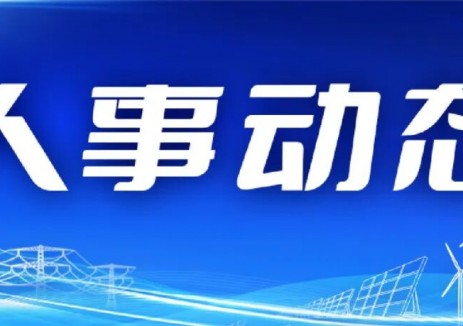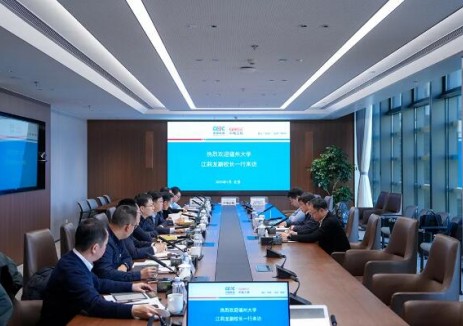从化石原料转向生物基原料是向更可持续的材料部门迈出的重要一步。异山梨醇是一种刚性的、源于葡萄糖的二级二元醇,它已被证明可以赋予有利的材料特性,但其低反应性阻碍了它在聚酯合成中的应用。在这里,荷兰阿姆斯特丹大学范特霍夫分子科学研究所的Gruter教授报告了一种简单而创新的合成策略,以克服聚酯合成中二级醇固有的低反应性。它能够从次级二元醇(如聚异山梨醇琥珀酸酯)合成完全的生物基聚酯,其分子量非常高(Mn高达42.8 kg/mol)。研究发现,在二元醇和二元酸单体中加入芳基醇,可在酯化过程中原位形成反应性芳基酯,这有利于缩聚过程中的链增长,从而获得高分子量的聚酯。这种合成方法广泛适用于基于异山梨醇和异甘露醇的脂肪族聚酯,并可能是朝着更普遍的商业化适应完全生物基的刚性聚酯迈出的重要一步。
图文解读
尽管在20世纪50年代首次报道了异山梨酯的合成,并作出了许多努力,以非传统的合成策略克服异山梨酯的低反应性,但无论哪种二元共聚物,都没有关于Mn>23.0 kg/mol的完全异山梨酯的报道(图1b)。这些低分子量导致了脆性的聚合物产品,不能用于大多数热塑性塑料的应用。这也可以从报告的PIsSu的Tg值的巨大变化中观察到(图1a),这表明尚未获得分子量的高原值以达到PIsSu的"真正"Tg值。因此,目前异山梨酯在聚酯合成中的应用仅限于异山梨酯相对于总二醇的低摩尔百分比(<40 mol%)的共聚多酯。尽管将异山梨酯加入到聚酯中已被证明可以改善它们的热和机械性能,但到目前为止,完全基于异山梨酯的聚酯的性能在很大程度上还没有被探索。
在本工作中,我们试图通过使用芳醇作为反应性溶剂来克服异山梨酯相对于水的低反应性,以同时去除水并形成反应性芳酯端基。该反应是在玻璃器皿中进行的,并且还扩大到了2L高压釜。PIsSu是主要的目标材料,但也使用另一种1,4:3,6-anhydrohexitol(isomannide)和几种脂肪族二元酸成功合成了其他聚酯。研究了用这种策略合成的一些聚酯的阻隔和机械性能。
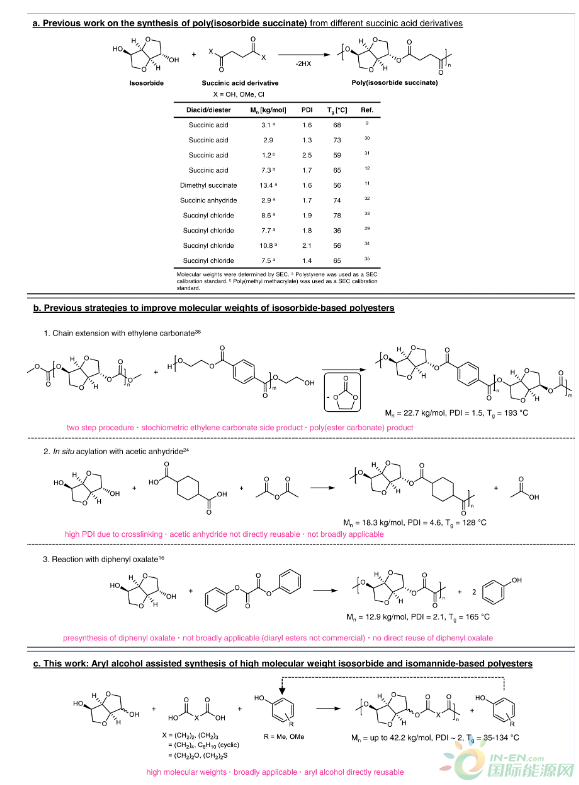
Fig.1 a Comparison of previous literature on the synthesis of poly(isosorbide succinate) (PIsSu). b Previous strategies to improve molecular weights of isosorbide-based polyesters. c The synthesis strategy of this work. Not shown in b is a strategy reported by Kricheldorf et al. on the improvement of isosorbide-based polyester molecular weights via silylation of isosorbide’s-OH groups and subsequent reaction with diacid chlorides.
众所周知,在酯化反应中,芳基酯比烷基酯或羧酸的反应性更强,这是因为芳基醇的离去基团能力提高了,而且在与水或脂肪族醇进行酯化反应后会发生不利的反作用。在20世纪60年代伊士曼公司的专利中已经描述了它们以对苯二甲酸二苯酯的形式用于聚酯合成,以提高基于不活跃的二级醇2,2,4,4-四甲基-1,3-环丁二烯醇的聚酯的分子量。最近的一些专利描述了使用草酸二苯酯来合成基于热惰性草酸、异山梨醇和线性二元醇共聚物的聚酯(图2b)。传统上,芳基酯是由羧酸氯化物或羧酸在一个单独的反应步骤中合成的,在聚酯合成之前需要单独的纯化步骤。

Fig.2 Synthesis of high molecular weight PIsSu with aryl alcohol. a Monomer synthesis from glucose, obtainable from either first or second-generation biomass. b Synthesis of PIsSu from succinic acid, isosorbide and p-cresol (see Fig. 3 for more information on the esterification). c PIsSu molecular weights obtained with a reactive solvent (p-cresol), no solvent, and an unreactive solvent (1,4-dimethoxybenzene) under comparable reaction conditions.
随后,对这种合成策略进行了更深入的研究。异山梨酯、琥珀酸和对甲酚(1:1:1.5摩尔比)在240℃下酯化5小时后,达到稳定状态。从反应混合物中除去H2O作为缩合产物,得到平均分子量约为1.6公斤/摩尔的低聚物(异山梨酯)单元。通过1H NMR对反应混合物进行结构阐释,发现琥珀酸的羧酸端基完全转化为对甲苯基琥珀酸基团(图3a,b)。随着反应时间的延长,低聚物的长度和醇酯端基的比例都没有明显变化(图3c,d)。

Fig.3 Esterification between succinic acid, isosorbide, and p-cresol. a 1H NMR spectrum showing the disappearance of succinic acid’s carboxylic acid proton around 12 ppm after 0?h, 0.5?h, 2?h, 3.5?h, and 5?h. b 1H NMR spectrum of aromatic region upon formation of a clear melt (t?=?0) and after 5?h esterification at 240?°C but before p-cresol removal. For a fully assigned 1H NMR spectrum of the reaction melt after esterification, see Supplementary Fig. 2. c Evolution of the alcohol (exo-and endo-OH groups of isosorbide) to ester end group (cresyl succinate) ratio during esterification with the amount of total unreacted isosorbide (respective total mol% of isosorbide). Determined from the 1H NMR spectra of the reaction melt taken after different esterification times (see Supplementary Fig. 1). For an assignment of the different end groups and signals corresponding to unreacted isosorbide used for the calculations, see Supplementary Fig. 2. For equations used to calculate end group ratios and unreacted isosorbide, see Supporting Information p.5. d Molecular weight evolution of oligo(isosorbide succinate) during esterification determined by GPC. Both c and d show that a steady state is reached after ~5?h of esterification.
应该注意的是,异山梨酯和琥珀酸的等摩尔比例对于获得高分子量的聚合物产品至关重要。使用过量的异山梨酯,就像异山梨酯基聚酯的合成程序中常见的那样,会导致缩聚过程中出现过量的醇端基。这反过来又降低了在反应的最后阶段可以获得的分子量,因为过量的异山梨醇必须被替换,以使聚合物链增长。由于异山梨的高沸点和低反应性,这对异山梨来说是非常困难的。因此,在本合成策略中,使用过量的异山梨酯,实际上否定了原位生成的芳基酯端基的好处。
将循环化学原理应用于本合成策略时,一个重要的因素是芳醇的可回收性。在二元酸、二元醇和芳基醇的酯化过程中,水作为缩合产物形成,从反应器中移出,与少量芳基醇一起收集在接收瓶中。由于水和对甲酚在室温下基本不相溶,所以形成了一个双相体系。在预缩合和缩合过程中,剩余的芳醇被收集到接收瓶中。丙烯醇的回收实验在后续反应前没有分离水层。在反应开始时加入的先前实验的任何额外的水与酯化过程中形成的水一起被迅速除去。如果需要,可以在缩聚前从接收瓶中除去水,或在聚合后进行相分离,从而轻松分离这两种馏分。在缩聚后回收的对甲酚中发现了可忽略不计的琥珀酸酐(图4c)。为了确认其可重复使用性,在没有任何额外纯化的情况下进行了一组回收实验(图4a)。重复使用对甲酚达五次,并没有导致分子量明显降低的产品。
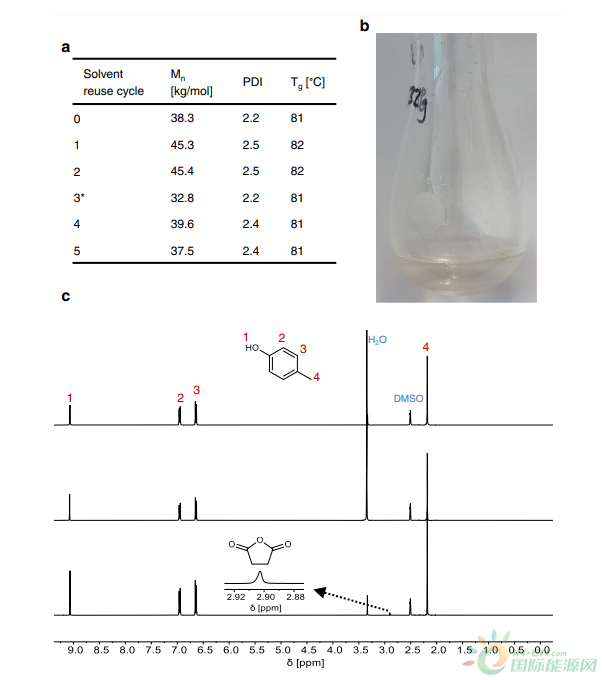
Fig.4 Reuseability of p-cresol. a Molecular weight of PIsSu synthesized with recycled p-cresol. p-Cresol was collected after polycondensation and reused without further purification. After five reuse cycles of p-cresol, no significant change in the molecular weight of the final product was observed. Differences in molecular weight can arise due to the very high melt viscosity of PIsSu, which can prevent stirring in the last 30?min of high vacuum polycondensation. b Picture of p-cresol after 5 reuse cycles. No change in appearance was visible to p-cresol from the bottle except for a water layer that formed during esterification. c 1H NMR spectra of fresh p-cresol (top), p-cresol recovered after pre-polycondensation (>6.5?mbar, middle), and p-cresol recovered after high vacuum polycondensation (<1?mbar, bottom). The 1H NMR spectra of recovered p-cresol were measured after five reuse cycles. 1H NMR analysis indicated very small amounts of succinic anhydride, which was collected during high vacuum polycondensation (<1?mbar).
在成功优化反应条件后,研究了异山梨醇基聚酯的材料特性,以寻找潜在的应用(图5)。这一系列聚酯的机械性能(图5b,c)取决于二元酸单体,这是由各自材料的刚度和Tg值的差异引起的。PIsSu和聚(异山梨醇酯)(PIsDga)表现出最有趣的特性。这两种材料都非常坚硬(如高达3870兆帕的杨氏模量所示),并具有比既定的高Tg聚合物(如伊士曼的Tritan,一种化石基高性能聚酯)或生物基聚乳酸(PLA)更高的极限拉伸强度。将PIsSu与最近报道的基于异山梨醇和4,4'-二氟二苯砜的超级工程热塑性塑料(SUPERBIO,Tg = 212 °C)进行比较,发现PIsSu的性能(杨氏模量方面)相当,甚至更优(极限拉伸强度和断裂伸长率)。
在一些合成材料的阻隔性能方面也发现了类似的有趣趋势(图5d)。发现PIsSu、PIsDga和聚(异山梨醇)(PIsGlu)的氧气屏障优于PET。PIsDga的透氧性最低,这与高阻隔材料相当,如最近报道的聚(乳酸-co-甘醇酸)(PLGA)共聚物(甘醇酸含量>80%)。所有被调查的材料的阻水能力都比PET和PLGA共聚物差一些。新的生物基材料的优越材料特性对其工业适应性很重要,因为它们可以激励后续替代化石基材料,而不是只能在价格上竞争的投放材料。
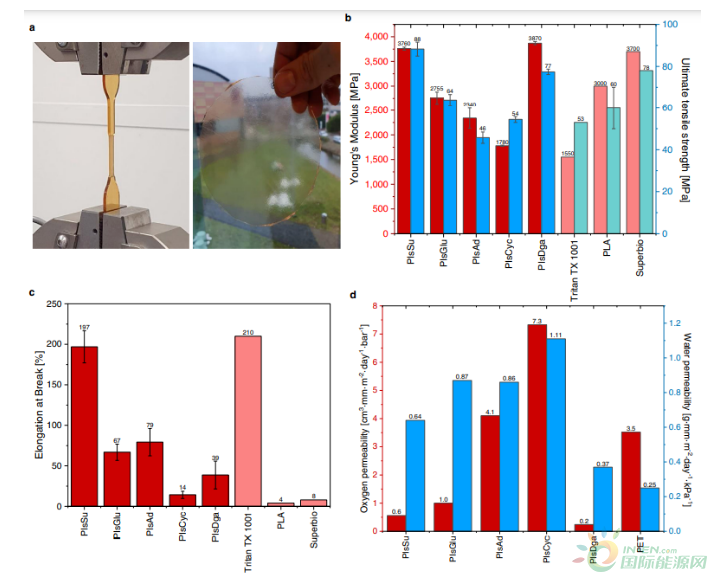
Fig.5 Barrier and mechanical properties of isosorbide-based polyesters. a Pictures of a PIsSu tensile bar during tensile testing and a PIsSu polymer film. b Young’s Modulus and ultimate tensile strength of isosorbide-based polyesters. Shown values are averaged from three measurements. PIsSu values were determined with samples synthesized in the 2?L autoclave. Reference values for Tritan TX 1001, PLA and Superbio were taken from the literature20,21,22. c Elongation at break of isosorbide-based polyesters. Shown values are averaged from three measurements. d Oxygen and water permeability of isosorbide-based polyesters. The oxygen permeability was determined at 30?°C and 50% humidity. The water permeability was determined at 38?°C and 90% humidity (PIsAd was measured at 30?°C due to the material’s low Tg). The values for PET were determined with commercially available PET (RamaPET N180, 10% crystallinity, not biaxially oriented).
总结
总之,我们提出了一种合成方法,用于合成基于生物基但不活跃的二级醇异山梨醇和异芒硝的高分子量聚酯。酯化过程中反应性芳基酯的原位形成导致缩聚过程中端基反应性的显著增强,并使合成的高分子量材料具有100 mol%的生物基刚性二级醇含量。到目前为止,这些材料还不可能合成出足够高的分子量,用于需要延展性的应用。所述方法适用于已知和新型的聚酯组合物。所述的异山梨醇基材料显示出有希望的阻隔性和机械性能,可以超过普通的化石基材料。操作简单,使用标准聚酯合成设备和单体,可以激发对现在可以获得的聚合物应用的进一步研究。可以进一步探索其他以前无法获得的、基于低反应性单体的聚酯成分,以及类似方法在其他类别的阶梯式增长聚合物(聚酰胺、聚碳酸酯)中的应用。。
 切换行业
切换行业

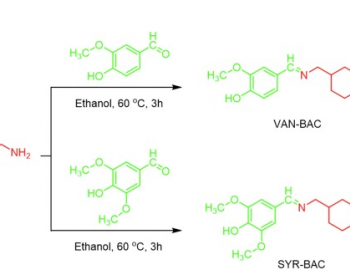
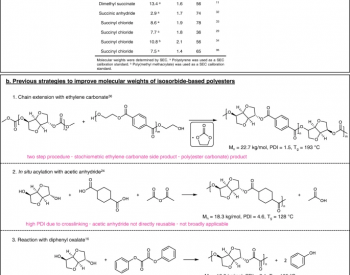
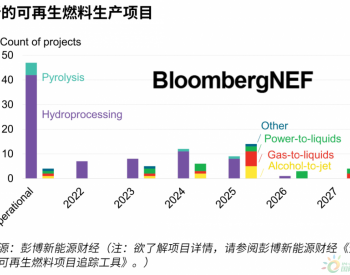
 正在加载...
正在加载...
